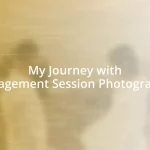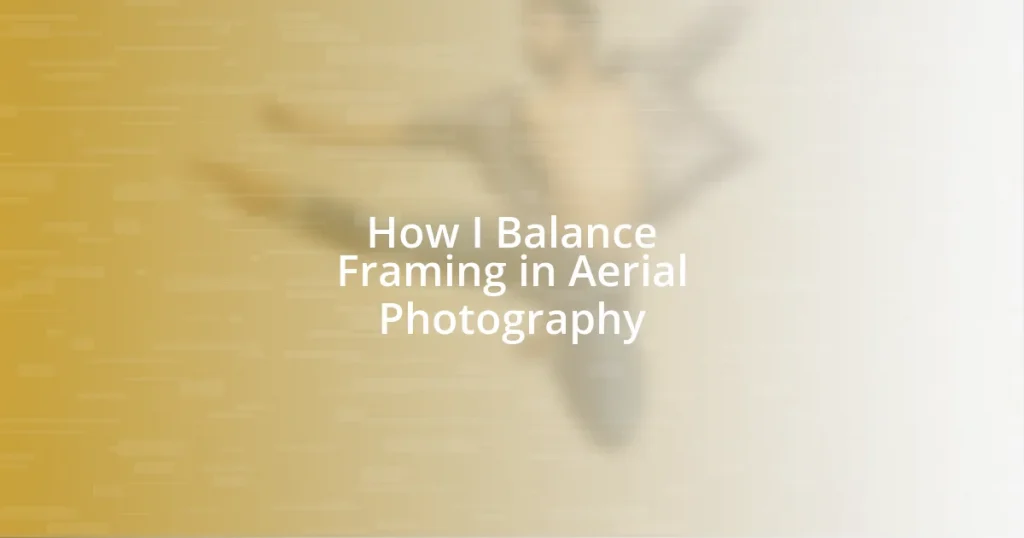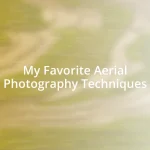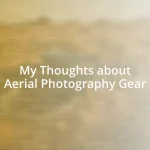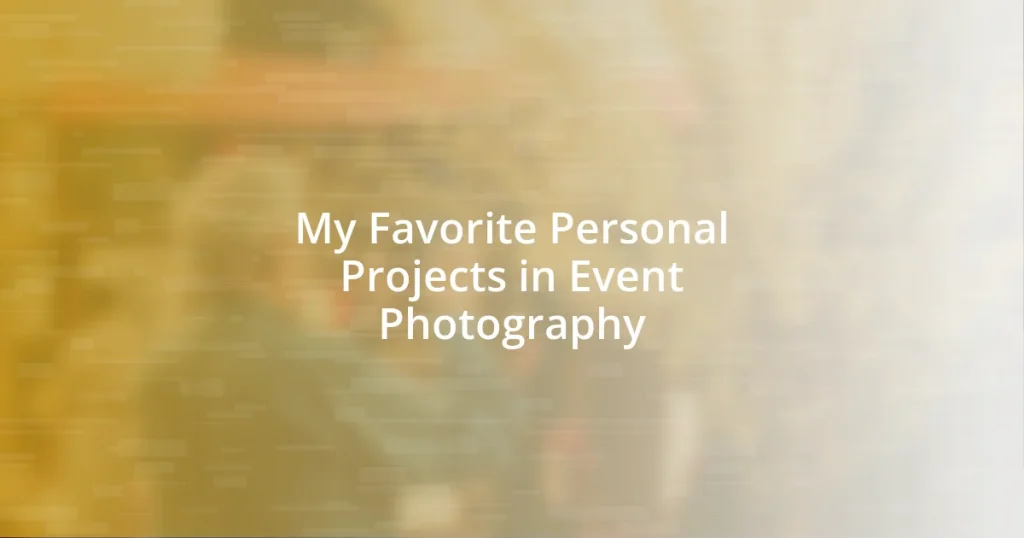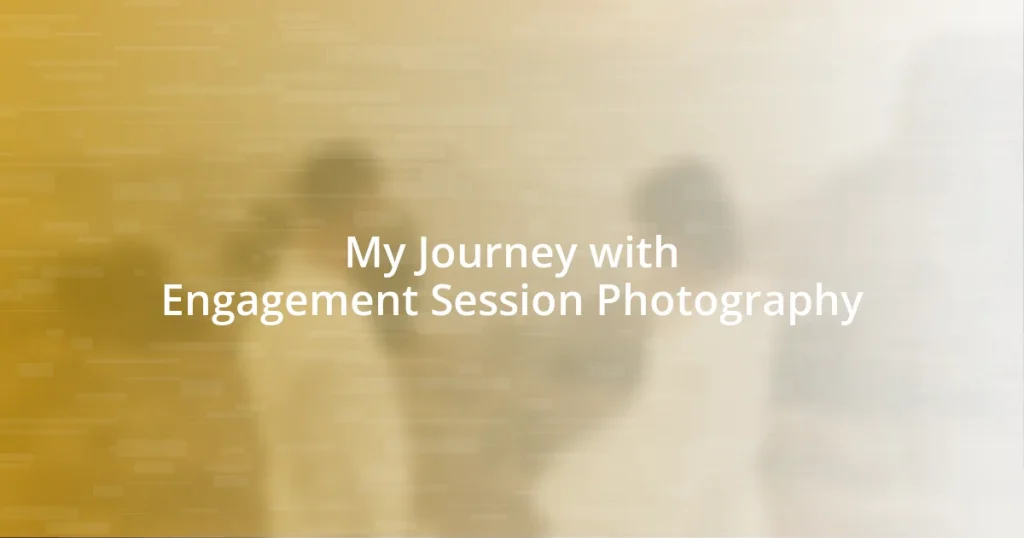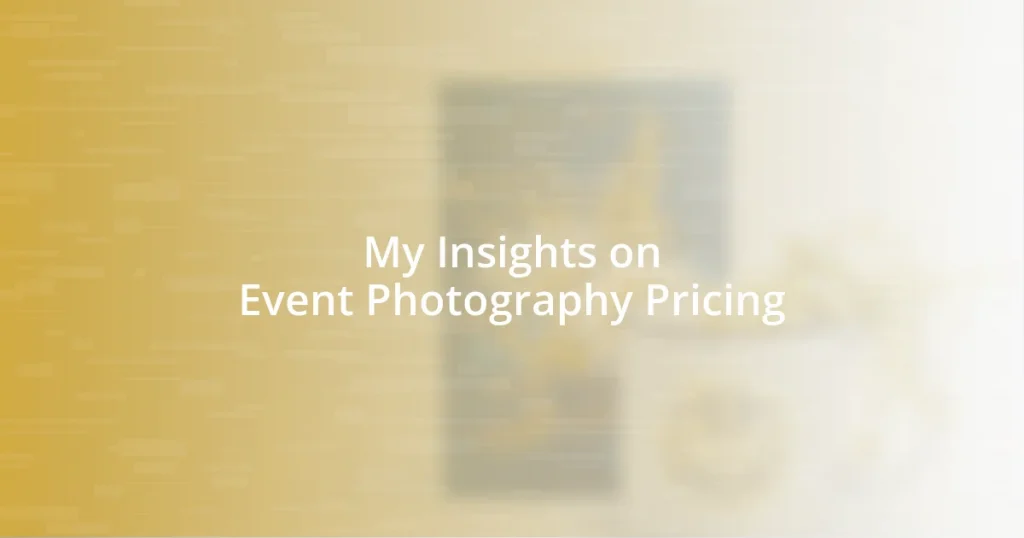Key takeaways:
- Aerial photography elevates ordinary scenes through composition, framing, and perspective, transforming them into evocative works of art.
- Techniques like the rule of thirds, leading lines, and negative space are essential for creating balanced and engaging images.
- Post-processing enhances aerial photos significantly, allowing for adjustments that refine focus, color, and detail to evoke stronger emotional responses.
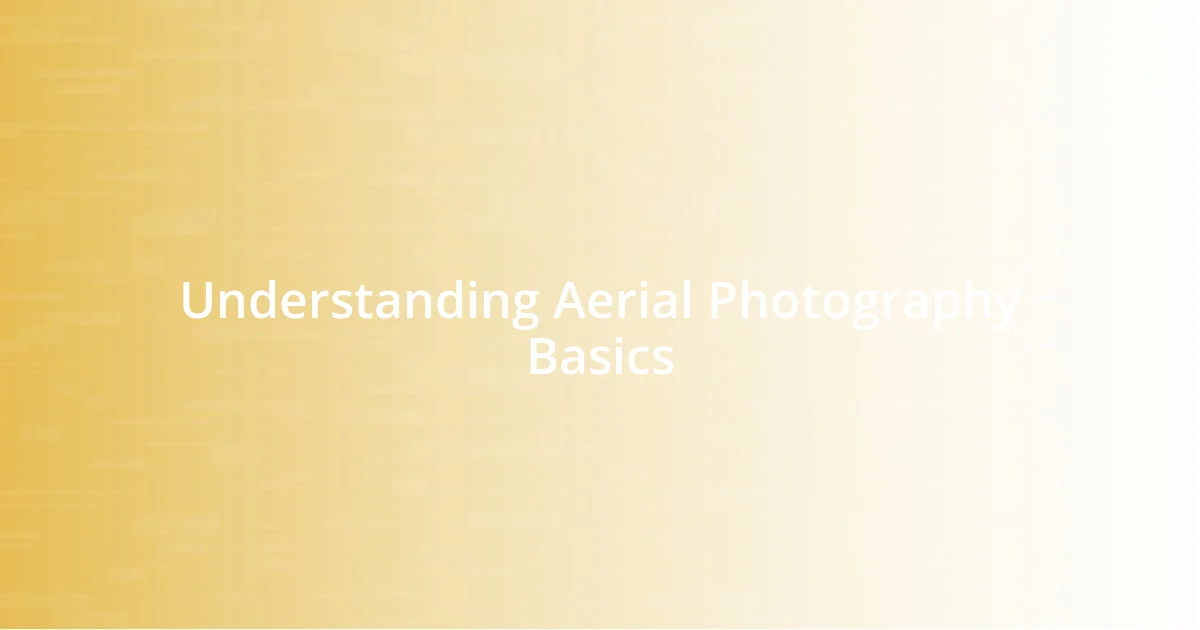
Understanding Aerial Photography Basics
Aerial photography captures images from elevated positions, often using drones or aircraft. I remember the first time I flew my drone over a breathtaking landscape; the feeling of liberation was exhilarating. It’s amazing how a change in perspective can transform an ordinary scene into something extraordinary.
Understanding the fundamentals involves knowing about composition, lighting, and the technology at your disposal. For instance, have you ever considered how weather conditions can dramatically affect the mood of your shots? One foggy morning, I found that thin clouds gave my photographs a haunting beauty I had never anticipated, adding an emotional depth that bright sunlight simply couldn’t achieve.
In this realm, framing is crucial. When you’re up in the air, the vastness can be overwhelming, but finding balance within that space is key. I often ask myself, “What story do I want to tell with this shot?” This question has guided me in creating images that not only please the eye but also resonate with viewers on a deeper level.
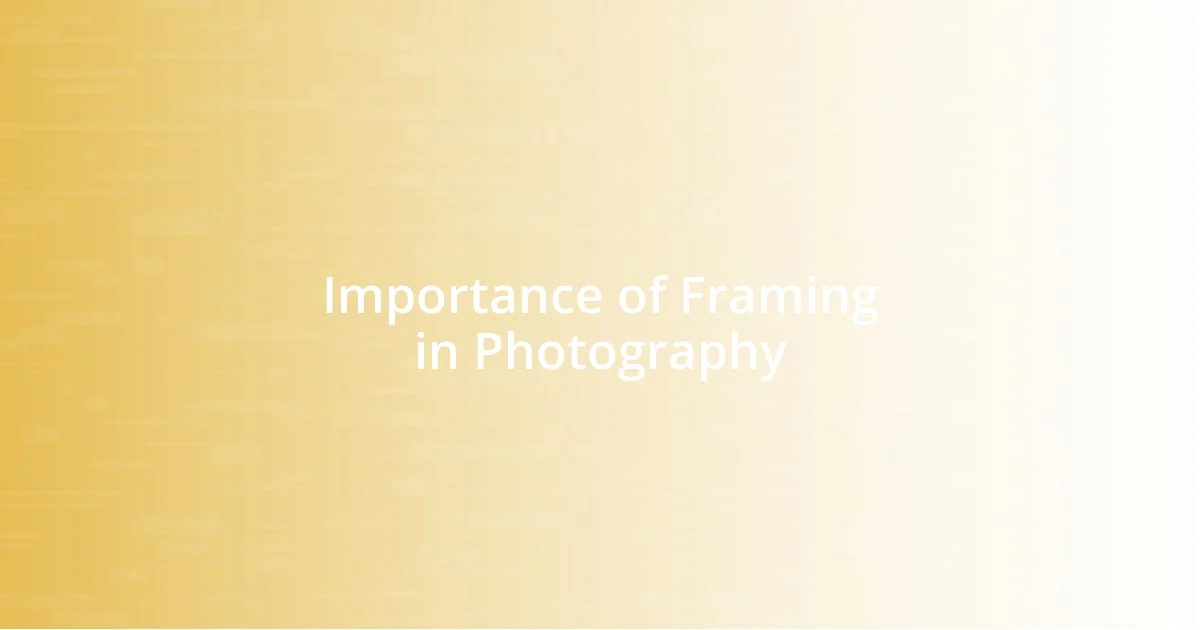
Importance of Framing in Photography
Framing in photography holds tremendous importance because it guides the viewer’s eye and helps convey the subject’s narrative. On one of my solo hikes, I discovered that framing a majestic mountain peak with overhanging branches drew attention to its grandeur, turning a standard photo into an engaging story. I noticed how the branches created a natural border, enhancing the depth and inviting viewers to step into the scene.
Consider these critical aspects of framing in photography:
- Focus: Proper framing directs attention to the primary subject, eliminating distractions.
- Context: It provides visual context, helping the audience understand the environment surrounding the subject.
- Emotion: Thoughtful framing evokes specific feelings, influencing the viewer’s emotional response.
- Balance: It creates harmony in the composition, making images more pleasing to the eye.
- Perspective: Varying your framing can offer fresh viewpoints, transforming familiar scenes into something new.
Embracing these elements can elevate your aerial photos from mere snapshots to evocative works of art.
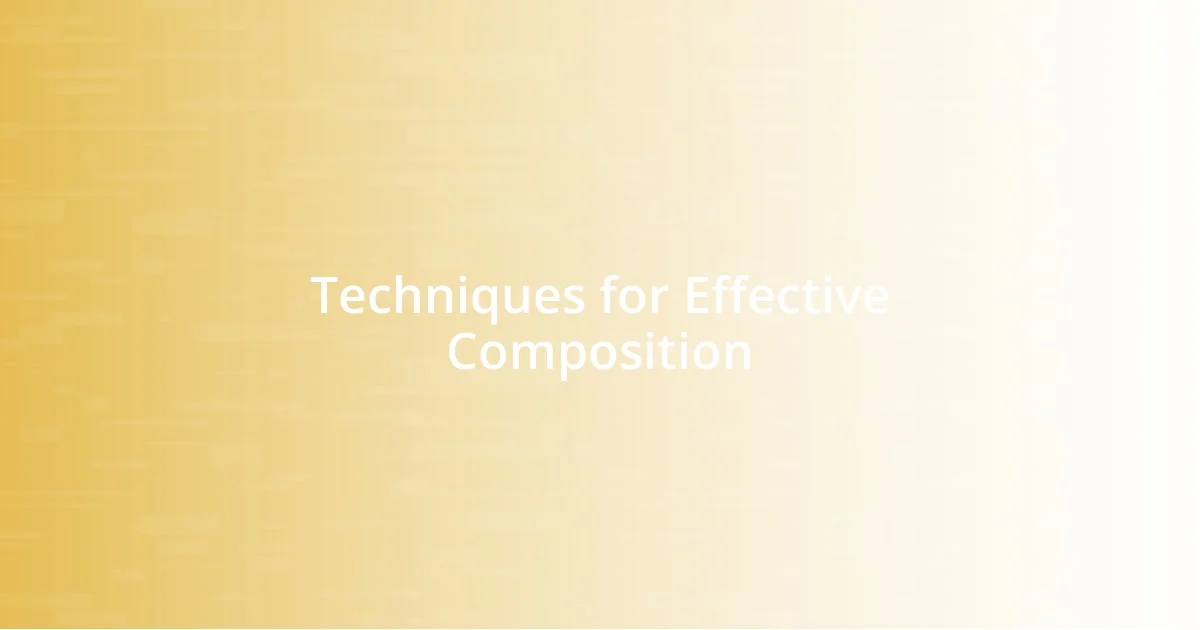
Techniques for Effective Composition
Finding effective composition in aerial photography is all about the angles and perspectives you choose. One of my favorite techniques is the rule of thirds. It’s simple yet powerful. I’ve found that aligning key elements along these imaginary grid lines draws the viewer’s eye naturally. For instance, during a sunset shoot, placing the horizon on the upper third created a beautiful balance between the colorful sky and the serene waters below, making the photo feel harmonious and inviting.
Another technique I often use is leading lines. They can guide the viewer through the image, emphasizing depth and movement. I vividly remember capturing an aerial shot of winding roads through a lush forest. The curves of the road, framed by the greenery, led my eyes into the distance, creating a sense of journey. It’s fascinating how this technique not only showcases the landscape but also tells a story, making the viewer feel like they’re embarking on an adventure.
Finally, I cannot stress enough the importance of negative space in my compositions. Often, I find myself drawn to expansive areas devoid of subject matter, like an open field stretching out towards the horizon. By allowing these spaces to breathe within the frame, I create a sense of tranquility and balance. I recall a moment when I captured a lone tree in a vast field; the emptiness around it amplified its significance, evoking feelings of solitude and reflection in viewers.
| Technique | Description |
|---|---|
| Rule of Thirds | Align key elements along imaginary grid lines for natural eye movement. |
| Leading Lines | Use lines in the composition to guide the viewer through the image. |
| Negative Space | Incorporate empty areas around subjects to create balance and emphasize them. |
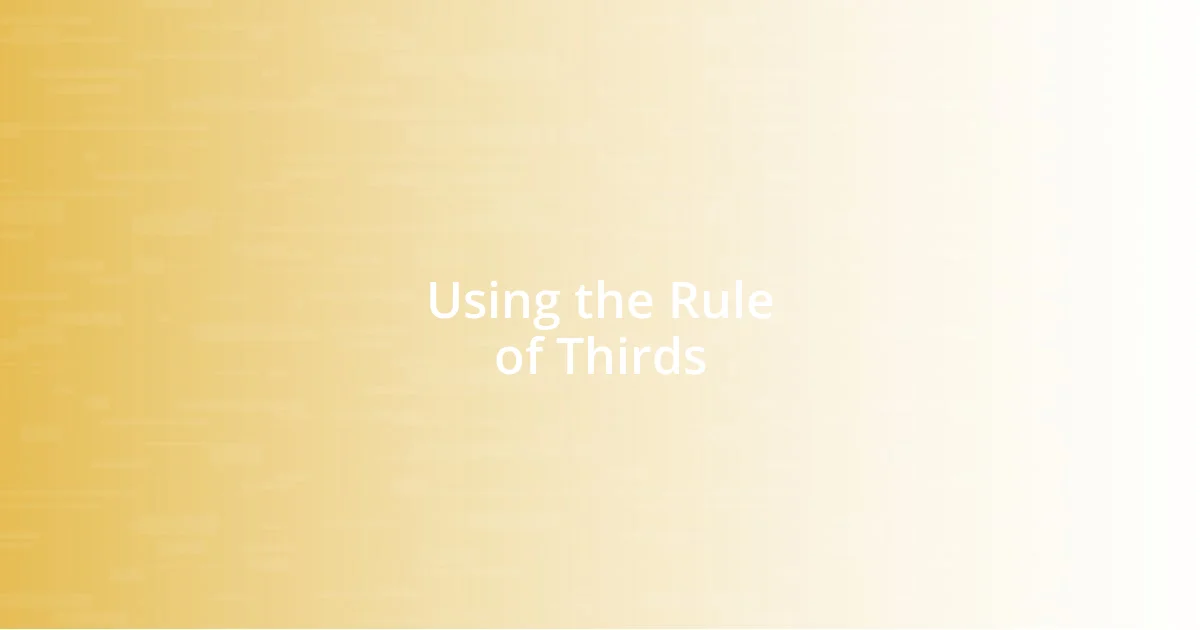
Using the Rule of Thirds
The rule of thirds has truly been a game-changer in my aerial photography journey. When I first learned about it, I felt a rush of creativity. Instead of centering my subjects, I began placing them along these imaginary grid lines. For example, while capturing a bustling city skyline at dusk, I positioned the main skyscraper on one of the intersection points. The result was breathtaking: the twinkling city lights contrasted beautifully with the deepening twilight, and I could practically hear the vibrant energy of that moment.
You might wonder: why does the rule of thirds work so well? From personal experience, it seems to tap into our natural tendency to seek balance and harmony in images. One particular instance stands out. While photographing a sprawling coastline, I divided the frame into thirds. By placing the crashing waves in the lower third and the setting sun in the upper third, I not only enhanced the beauty of the scene but also evoked a sense of peace and grandeur. It felt as if the viewer could almost hear the ocean’s roar and feel the day’s warm glow.
Embracing this technique helps reduce clutter in composition, allowing my subjects to shine. I’ve often found myself in situations where I was tempted to include too much detail—a stunning landscape, for instance. However, by applying the rule of thirds, I realized I could simplify the shot. I remember taking a panoramic aerial view of sprawling fields, and by positioning a single tree at a third point, it transformed the entire image. Suddenly, the tree became a focal point, inviting viewers to ponder its story amidst the vast expanse. Doesn’t that make you think about how simple adjustments can create such impactful images?
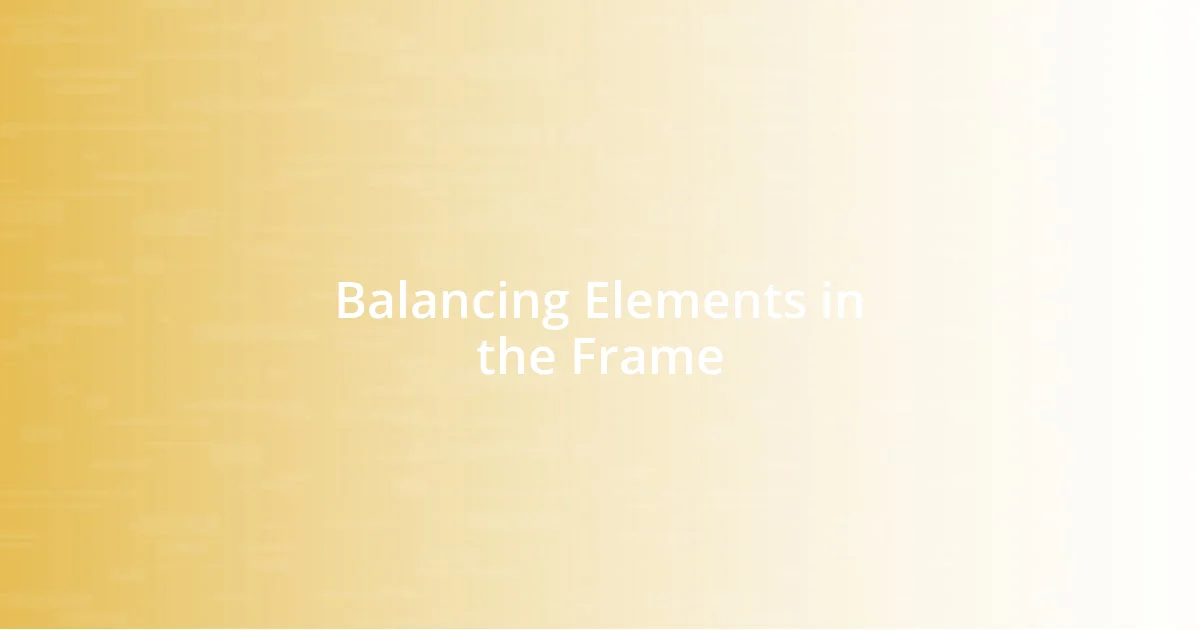
Balancing Elements in the Frame
In aerial photography, balancing elements in the frame can make or break an image’s impact. For example, I vividly remember hovering above a picturesque village surrounded by rolling hills. By carefully positioning the main structure of the village to one side and allowing the hills to sweep in gently from the other side, I created a dynamic tension that drew the viewer’s eye across the entire composition. It’s fascinating how this balance can evoke feelings of harmony and movement at the same time.
One of the lessons I’ve learned is to always consider the relationship between foreground and background elements. During a chilly morning shoot over a foggy lake, I captured a silhouette of a fisherman casting his line against the milky mist. I placed him prominently in the foreground, allowing the ethereal chaos of the fog to create a sense of depth behind him. This balancing act between the detailed fisher and the soft background made the photo feel intimate yet vast—like a serene moment suspended in time.
It’s also essential to think about color and light when balancing elements. I once photographed a vibrant sunset over a bustling beach scene; the warm hues of orange and pink danced above while the shadowy figures of beachgoers populated the lower frame. By ensuring that the warmth of the sky complemented the cooler tones of the sand and water, I created a visual equilibrium that felt both lively and soothing. Have you ever considered how colors in your composition can work together to create balance and emotional resonance?
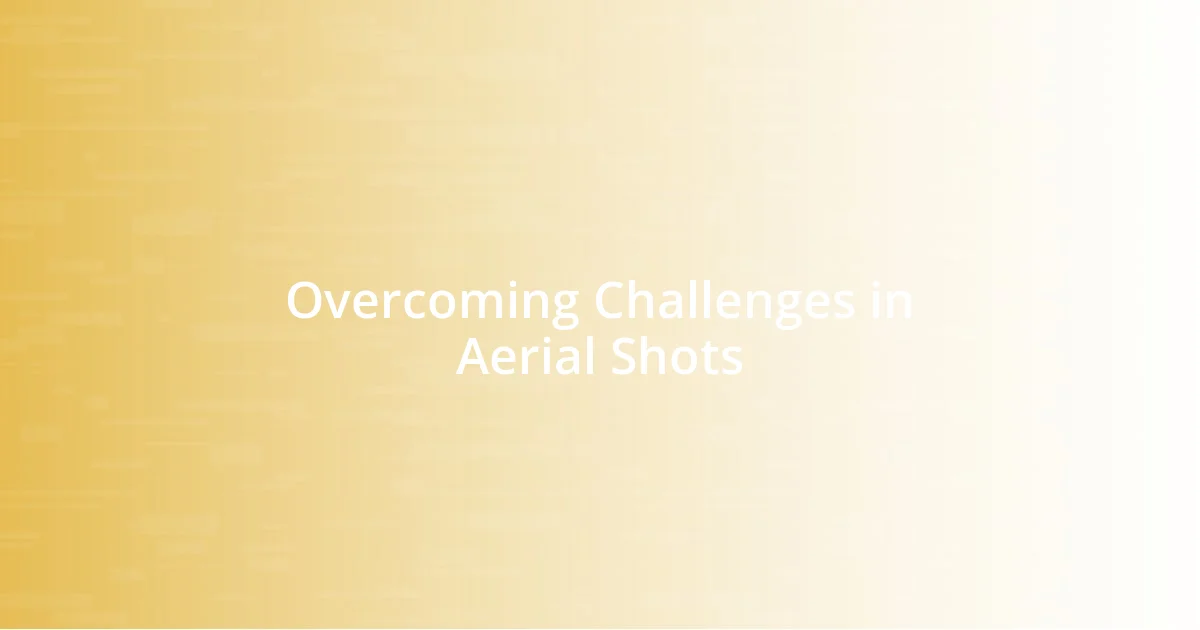
Overcoming Challenges in Aerial Shots
Overcoming challenges in aerial shots often means adapting to unpredictable conditions. I remember one particular day when I was capturing a mountain range, and suddenly, dark clouds rolled in. Instead of abandoning the shoot, I shifted my focus to the dramatic interplay of light between the clouds and peaks, which transformed the potential disaster into a strikingly moody composition. Didn’t that unexpected twist add a whole new layer of emotion to the image?
Another hurdle can be achieving sharp focus in a rapidly moving drone. I once encountered blurred images while shooting a serene lake surrounded by vibrant foliage. To combat this, I invested in a higher quality lens and practiced using manual settings to ensure crisp details. This allowed me to capture the fine textures of the leaves and the stillness of the water, creating a contrast that truly brought the scene to life. Have you ever had to overcome such technical hurdles in your photography?
Lastly, perspective can become a challenge in aerial photography. During a flight over a bustling city, I struggled to find a unique angle that conveyed the vibrancy of urban life. I decided to tilt the camera downwards slightly while catching the city at sunset. This unexpected framing created intriguing lines and reflections on the glass buildings, adding depth and excitement. It made me realize that sometimes, a slight change in perspective can lead to magical results. How often do you try different angles to push the boundaries of your own creativity?
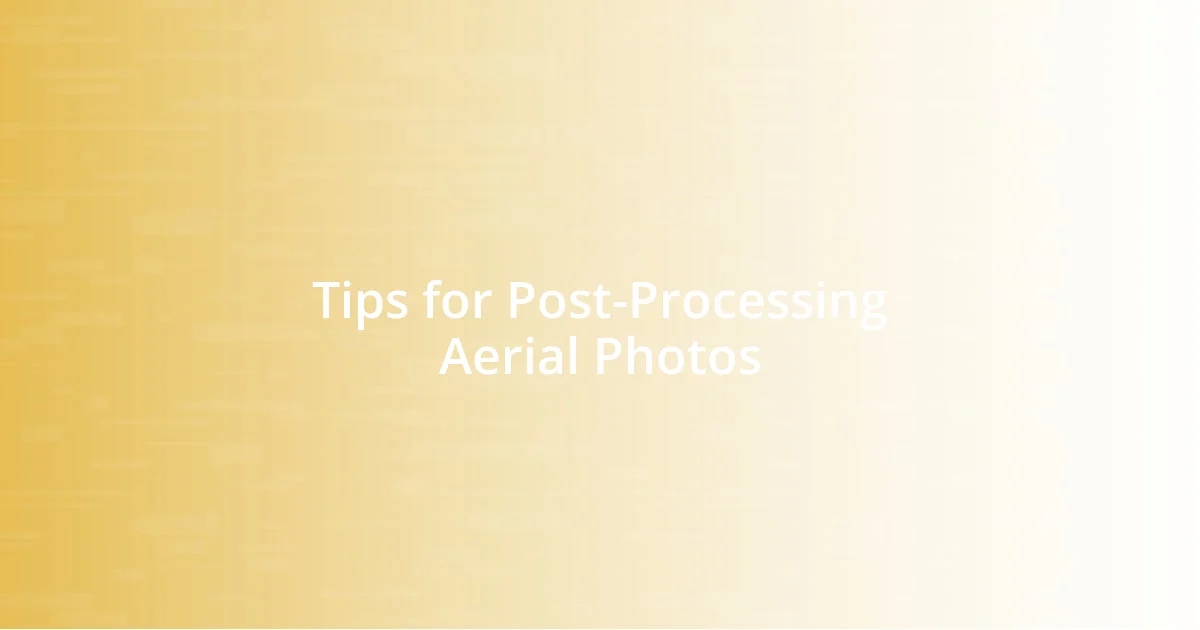
Tips for Post-Processing Aerial Photos
Post-processing aerial photos is where the magic truly happens. I recall a day spent editing a shot of a lush forest, its layers revealing subtle variations in color. By enhancing the greens and adding a touch of contrast, I successfully transformed an already beautiful image into a vibrant tapestry that felt alive. Have you ever experienced that moment when your image transitions from good to breathtaking in post-processing?
One thing I value is the power of cropping during editing. I once had a spectacular shot of a coastline, but some distracting elements crept into the frame. As I narrowed the focus and removed those distractions, the image suddenly popped. It’s amazing how a simple adjustment can refine the story of your image. Have you considered how cropping could elevate your own photography recipes?
Lastly, don’t underestimate the impact of adjusting highlights and shadows. I remember processing an aerial view of a city skyline at dusk—the interplay of light was magical. By carefully lifting the shadows, I revealed intricate details in the buildings that were lost in the twilight. This not only enhanced the photo but also added depth and interest. How do you approach light manipulation in your editing process for a more compelling narrative?

